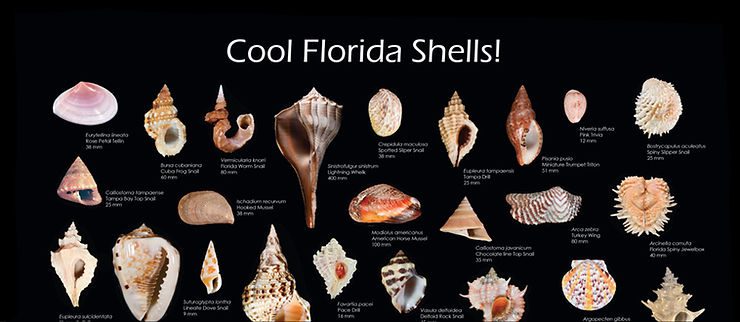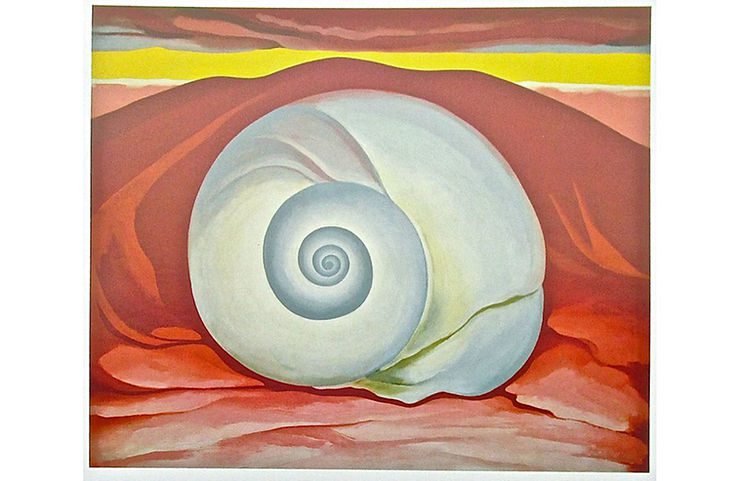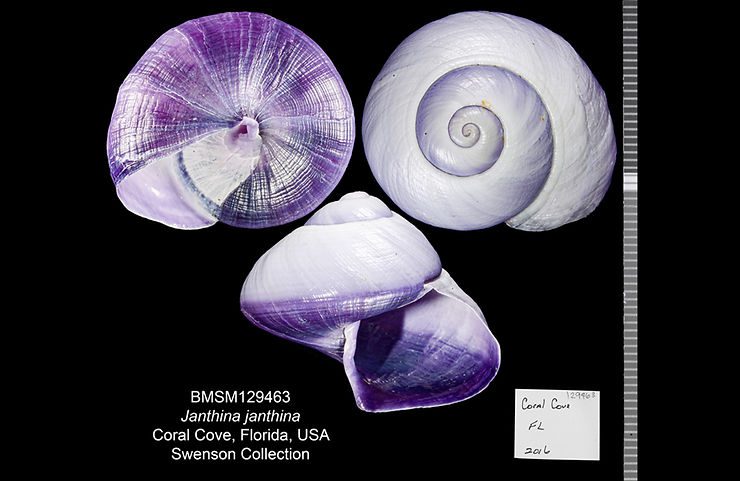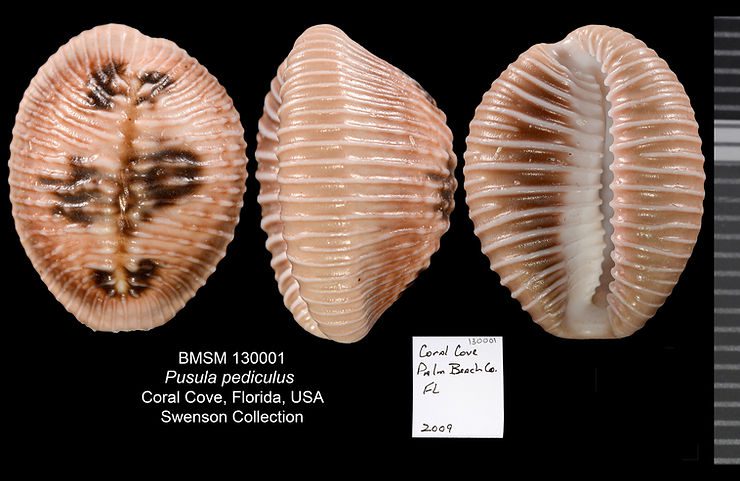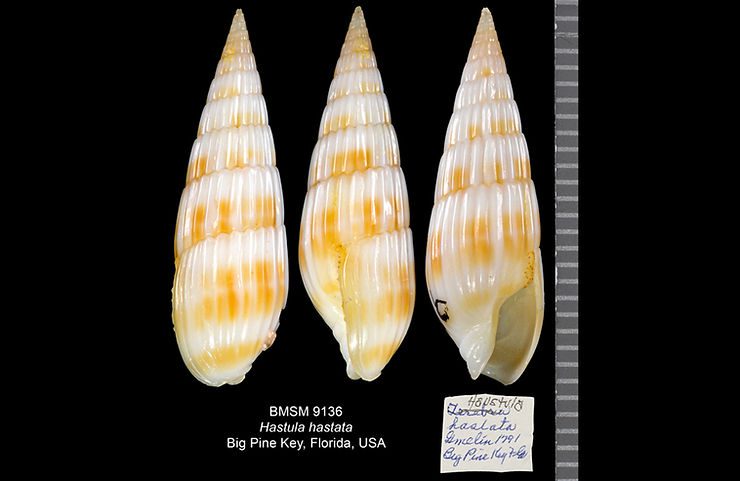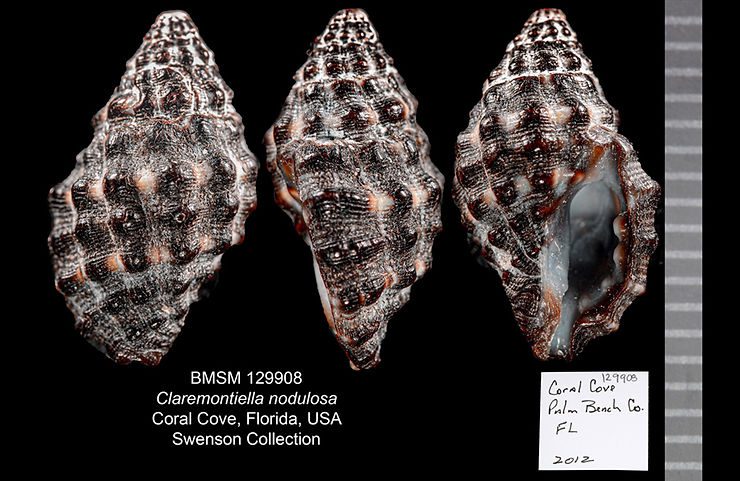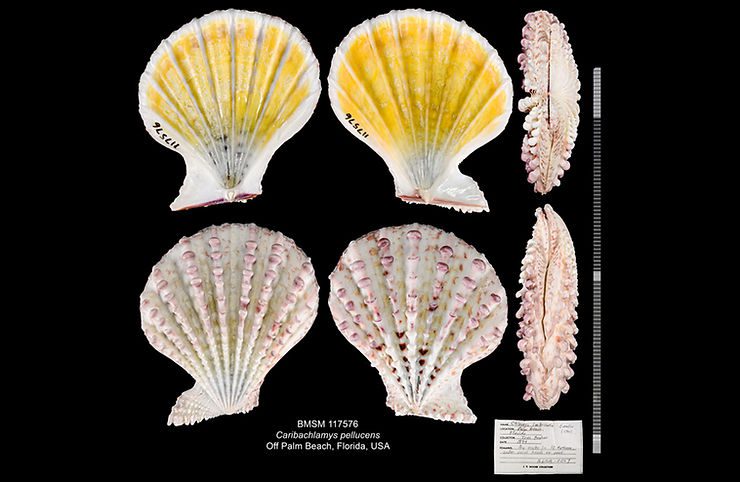
Shell of the Week: The Little Knobby Scallop
Caribachlamys pellucens (Linnaeus, 1758) measures up to 37.4 mm (about 1.5 inches) in height. The shell has about 8–10 radial ridges festooned with small knobs or thick scales. The valves in this species may show strong yellow hues internally. We assume that the coloration is not advantageous for visual communication of any kind, because other animals cannot see the inside of a shell. Bright colors and strong patterns usually serve to warn predators of poisonous substances present, or to attract
